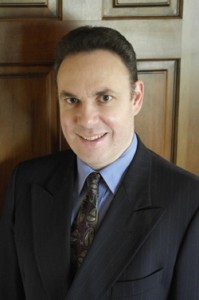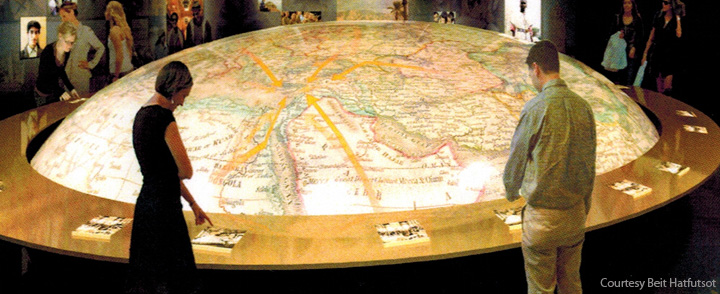Tori Gottlieb, Special to The Jewish Sound
Thirty-six years ago, Beit Hatfutsot — literally, “House of the Diaspora” — opened in Tel Aviv. The museum, founded with the goal of being a central archive and memorial for Jewish life, assumed the responsibility of documenting Jewish communities all over the world in a central place that members of the diaspora could then visit and enjoy.
The idea behind having a central location for Beit Hatfutsot in Israel was that all Jews would eventually return to Israel in some way, either by making aliyah or by visiting. But in recent years, Beit Hatfutsot has changed its goals. Now called “The Museum of the Jewish People,” Beit Hatfutsot is focused on Jewish community and identity building throughout the world.
David Chivo, who formerly served as executive vice president at the Jewish Federation of Greater Seattle, recently joined Beit Hatfutsot as its North America director. From his new Seattle office he is leading the museum’s $90 million renewal campaign to help make Beit Hatfutsot an accessible experience for the international Jewish community.
“Beit Hatfutsot has a unique value offering in how it understands and transmits content related to Jewish identity building,” Chivo said, explaining that Israel will always have centrality within the global Jewish community, but needs for there to be strong centers of Jewish life globally.
Chivo explained that the philanthropic campaign will address the three ways the museum can bring content to the global Jewish community. First is the exhibitions themselves. They will continue to be based in Israel, but will travel globally so the best of Beit Hatfutsot can have a presence in Jewish community centers, on college campuses, and in public spaces across the world.
“We’re completely recreating the museum experience itself with one of the finest museum designers in the world,” Chivo said, crediting Washington, D.C.-based museum designer Patrick Gallagher with the transformation Beit Hatfutsot has undergone.

Beit Hatfutsot also boasts the School of Jewish Peoplehood Studies (SJPS), which serves more than 5,000 people a year from all over the world. SJPS’s intended impact is to provide both academic as well as experiential resources to educators and other Jewish leaders so they can take the Beit Hatfutsot philosophy of Jewish identity and Jewish-peoplehood building back to their communities.
The third component is a significant investment in technology. Chivo envisions computer or iPad stations scattered throughout the museum for visitors to use as they explore the exhibits, with continued access to the exhibits through the visitors’ personal devices when they return home.
Beit Hatfutsot is also building an online home for its Douglas Goldman Jewish Genealogy Center, which will open to the public in early 2015. The new online database will allow users to build a personalized family tree and use smart technology to automatically build off information input by the user to make the research process easier.
Beit Hatfutsot’s transformation from centrally located archive to global content distributor began in the early 2000s, when the museum experienced a period of decline. In 2005, the Israeli government passed the Beit Hatfutsot Law in the Knesset, declaring the museum “the National Center for Jewish communities in Israel and around the world.” The law’s intent was to forever consider Beit Hatfutsot a treasure and a cultural institution whose international role is to tell the story of the Jewish people.
The Beit Hatfutsot campaign is off to a swift start, with two gifts of $5 million each from Ambassador Alfred Moses and International Spy Museum founder Milton Maltz. Chivo is excited to reach out to additional philanthropists who can help Beit Hatsutfot fulfill its goal of bringing Jewish culture and identity to the global community.
“Beit Hatfutsot isn’t about the Holocaust or remembrance or guilt,” said Chivo of the museum’s mission. “It’s about feeling great about being part of a religious civilization that has triumphed and thrived and that’s flourishing today, and will continue to do so.”
Beit Hatfutsot seeks to build Jewish identity that is not just a scholastic or travel experience, but a way of daily life, Chivo said.
“Over the last 20 years, the central question for the American Jewish community is how we strengthen identity,” he added. “The way that we’ve approached it is through day school education, camping, and Birthright Israel experiences — many things are really focused on the next generation. But what hasn’t occurred is an understanding of Jewish identity that’s for all of us — for people who are young, in the middle of their lives, or the older generation.”
For more information on Beit Hatfutsot, visit the museum’s website at www.bh.org.il.
